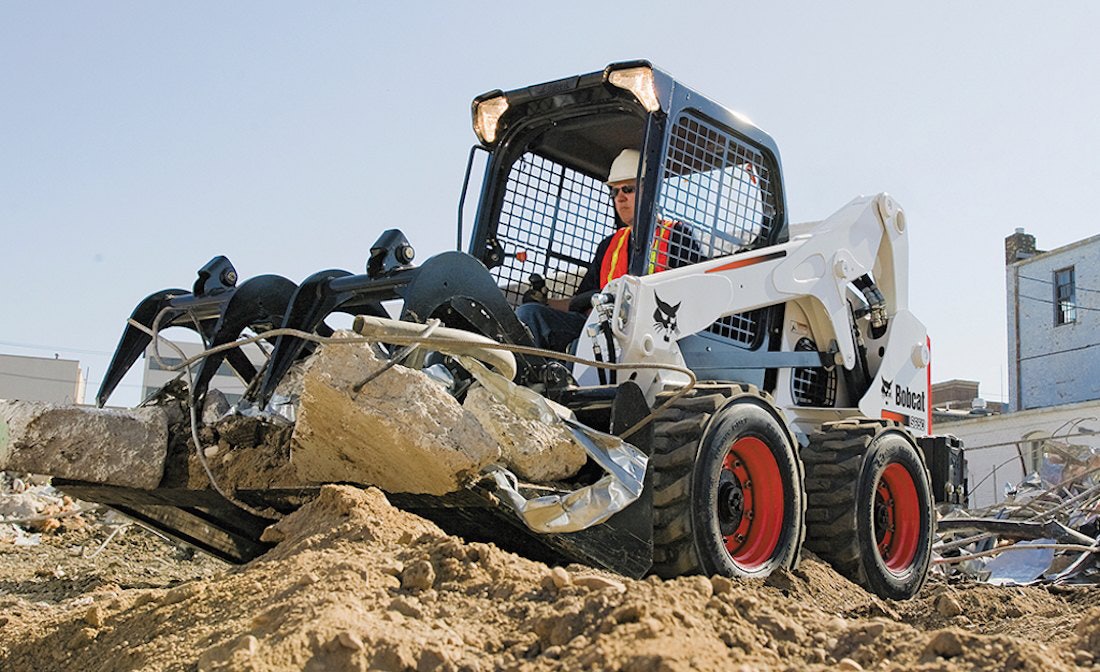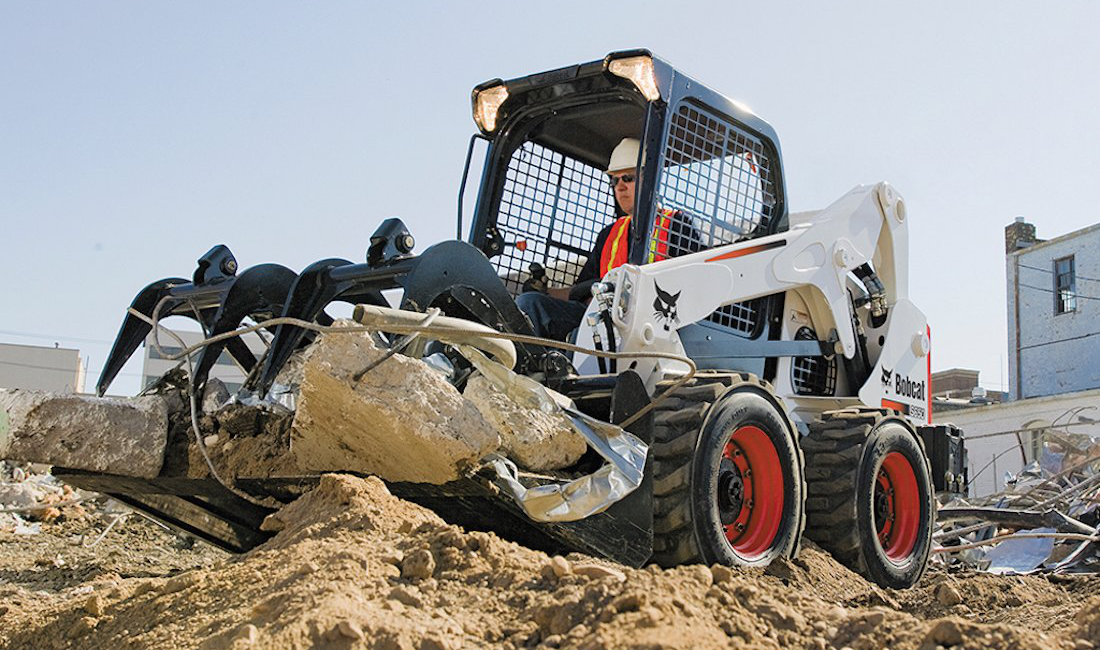Do you ever wonder how long a wheeled skid steer can last? Well, you’ve come to the right place! In this article, we’ll delve into the average lifespan of a wheeled skid steer. So, let’s get ready to explore this fascinating topic together!
When it comes to construction equipment, durability is key. And that’s why understanding the average lifespan of a wheeled skid steer is important. So, buckle up and join us as we uncover the secrets behind how long these sturdy machines typically stick around.
Whether you’re a curious teenager or a construction enthusiast, you’ll find this information valuable. So, get ready to learn all about what determines the average lifespan of a wheeled skid steer. Let’s dive right in!
A wheeled skid steer’s average lifespan can vary depending on several factors. The durability and maintenance of the machine, as well as the nature and frequency of its use, can affect its lifespan. Generally, a well-maintained skid steer can last anywhere from 5,000 to 10,000 hours of operation. Regular inspections, timely repairs, and proper servicing can help extend the lifespan of a wheeled skid steer.

What’s the Average Lifespan of a Wheeled Skid Steer?
Skid steers are versatile machines used for a wide range of tasks in construction, agriculture, and other industries. One common question that arises when considering the purchase or maintenance of a wheeled skid steer is, “What’s the average lifespan of a wheeled skid steer?” The answer to this question depends on various factors such as usage, maintenance, and brand. In this article, we will explore the average lifespan of a wheeled skid steer and provide you with valuable insights to help you make informed decisions.
Factors Influencing the Lifespan of a Wheeled Skid Steer
Several factors contribute to the longevity of a wheeled skid steer. Firstly, the quality of the machine itself plays a significant role. Skid steers manufactured by reputable brands tend to have better build quality and durability compared to lesser-known or generic brands. Additionally, regular maintenance and proper care can significantly extend the lifespan of a wheeled skid steer. Routine inspections, timely oil changes, and addressing any mechanical issues promptly are vital for keeping the machine in optimal condition. Another crucial factor is the intensity and frequency of usage. Skid steers subjected to heavy-duty work and long hours of operation may experience more wear and tear, potentially reducing their lifespan.
Moreover, the environment in which the skid steer operates can impact its longevity. Exposure to extreme temperatures, excessive dust or debris, and corrosive materials can lead to premature wear and damage. It is important to store the skid steer in a suitable environment and clean it regularly to minimize the impact of such factors. Lastly, the skill and expertise of the operator also influence the lifespan of a wheeled skid steer. An experienced operator who follows best practices and operates the machine within its designated limits can help prolong its life.
Average Lifespan of a Wheeled Skid Steer
While it is challenging to determine an exact lifespan for a wheeled skid steer, industry experts estimate that a well-maintained and properly operated machine can last anywhere from 5,000 to 10,000 hours of usage. This estimate can vary depending on the factors mentioned earlier. Skid steers used in light-duty applications, with regular maintenance and optimal operating conditions, have the potential to reach or exceed the upper end of the estimated lifespan range. On the other hand, skid steers subjected to heavy-duty work and less meticulous maintenance may have a shorter lifespan closer to the lower end of the range.
It is essential to note that the average lifespan is not an indication of when a skid steer will fail completely. Instead, it represents the point at which the machine may require more frequent repairs and maintenance, impacting its overall efficiency and productivity. Regular inspections by qualified technicians can help identify potential issues and address them before they escalate, thereby extending the lifespan of a wheeled skid steer.
The Importance of Regular Maintenance and Care
To maximize the lifespan of your wheeled skid steer, implementing a comprehensive maintenance and care routine is crucial. Here are some tips to help you keep your machine in optimal condition:
1. Follow the Manufacturer’s Guidelines
Manufacturers provide guidelines and recommendations regarding routine maintenance tasks such as oil changes, filter replacements, and inspections. Adhering to these guidelines ensures that your skid steer receives the necessary care it needs to perform at its best and extend its lifespan.
2. Keep it Clean
Regularly cleaning your wheeled skid steer helps prevent the accumulation of debris and contaminants, reducing the risk of mechanical issues and corrosion. Pay particular attention to the engine compartment, radiator, and hydraulic system, as these areas are prone to dirt buildup and require proper cleaning.
3. Address Issues Promptly
If you notice any unusual sounds, vibrations, or performance issues with your skid steer, it is crucial to address them promptly. Ignoring potential problems can lead to more significant damage and costly repairs down the line. Consult a qualified technician to diagnose and resolve any issues that arise.
4. Use Genuine Parts and Lubricants
When replacing parts or performing maintenance, always opt for genuine parts and lubricants recommended by the manufacturer. Using substandard alternatives can compromise the performance and longevity of your wheeled skid steer.
5. Train and Educate Operators
Properly training and educating operators on the correct operation techniques and best practices can help prevent unnecessary wear and damage to the skid steer. Emphasize the importance of operating within the specified limits, avoiding harsh maneuvers, and proper machine shutdown procedures.
Extended Lifespan with Proper Care and Regular Inspections
While the average lifespan of a wheeled skid steer can vary, implementing a comprehensive maintenance plan and adopting proper operating practices can significantly extend its lifespan. By following the manufacturer’s guidelines, keeping the machine clean, promptly addressing issues, using genuine parts and lubricants, and educating operators, you can maximize the efficiency and longevity of your wheeled skid steer. Regular inspections by qualified technicians are essential for identifying potential problems and taking proactive measures to ensure the continued performance of your machine. Remember, a well-cared-for wheeled skid steer is an invaluable asset that can serve your needs for many years to come.
Key Takeaways: What’s the average lifespan of a wheeled skid steer?
- A wheeled skid steer typically has an average lifespan of around 5,000 to 7,000 hours.
- Regular maintenance and proper care can help extend the lifespan of a wheeled skid steer.
- Factors such as usage intensity, operating conditions, and maintenance history can affect the lifespan of a wheeled skid steer.
- Timely repairs and component replacements can contribute to a longer lifespan for a wheeled skid steer.
- It’s important to consult the manufacturer’s guidelines and recommendations for maintenance and service intervals to maximize the lifespan of a wheeled skid steer.
Frequently Asked Questions
Welcome to our FAQ section on the average lifespan of a wheeled skid steer! If you’re curious about the longevity of these versatile machines, you’ve come to the right place. We’ve compiled some common questions and answers to provide you with a better understanding of their lifespan.
1. How long can a wheeled skid steer typically last?
A wheeled skid steer can have a lifespan that ranges anywhere from 5,000 to 10,000 hours of operation, but this can vary based on several factors. Regular maintenance, quality of components, and the intensity of usage all play a role in determining how long the machine will last. In general, a well-maintained skid steer can last around 10 to 20 years. However, it’s important to note that individual conditions and usage patterns can significantly impact this estimate.
To maximize the lifespan of a wheeled skid steer, proper maintenance is key. This includes following the manufacturer’s maintenance schedule, performing regular inspections, and addressing any issues promptly. Additionally, operators should be mindful of the machine’s workload and avoid pushing it beyond its recommended limits. Taking these steps can help extend the lifespan of a wheeled skid steer.
2. Are there any factors that can shorten the lifespan of a wheeled skid steer?
Yes, there are several factors that can potentially shorten the lifespan of a wheeled skid steer. One of the primary factors is inadequate maintenance. Neglecting regular servicing, failing to address minor issues, or ignoring warning signs can lead to accelerated wear and tear, which can significantly reduce the lifespan of the machine.
Another factor is improper usage and overloading. Exceeding the machine’s lifting capacity, operating on rough terrains without caution, or using attachments that exceed the specified limits can put excessive strain on the skid steer, causing premature wear and potential failure. It’s important to operate the machine within its recommended guidelines to ensure optimal performance and longevity.
3. Can the lifespan of a wheeled skid steer be extended through repairs and refurbishment?
Yes, in many cases, the lifespan of a wheeled skid steer can be extended through proper repairs and refurbishment. When the machine reaches a certain age or accumulates a high number of operating hours, certain components may start to wear out or fail. By replacing these components with genuine parts and addressing any underlying issues, the skid steer can be restored to its optimal functioning condition.
Regular inspections and proactive repairs can help identify and address any potential problems early on, preventing further damage and extending the lifespan of the machine. It’s advisable to work with skilled technicians who have experience in working with skid steers to ensure that all repairs and refurbishments are carried out effectively.
4. Should I consider the warranty period when estimating the lifespan of a wheeled skid steer?
While the warranty period of a wheeled skid steer can provide some insight into the expected lifespan, it shouldn’t be the sole determining factor. Warranty periods typically range from one to three years, but due to the various factors that can impact a skid steer’s lifespan, it’s important to consider factors beyond just the warranty duration.
The warranty mainly covers manufacturing defects and faults that may arise within a specific period after purchase. However, the longevity of a skid steer depends on factors like maintenance, usage, and operating conditions. Therefore, it’s crucial to keep in mind that while the warranty may offer a certain level of reassurance, it should not be the only factor considered when estimating a wheeled skid steer’s lifespan.
5. Are there any signs that indicate a wheeled skid steer is nearing the end of its lifespan?
Yes, there are some signs that may indicate a wheeled skid steer is nearing the end of its lifespan. One common indicator is frequent breakdowns or mechanical issues that persist despite regular maintenance and repairs. As a skid steer ages, its components deteriorate, making it more susceptible to malfunctions and decreased performance.
Another sign is increasing operating costs. If you notice a steady rise in repair and maintenance expenses, or the need for costly replacement parts becomes more frequent, it may be a sign that the machine is reaching the end of its useful life. In such cases, it might be more economical to invest in a new skid steer rather than continuing to repair an aging one.
Heavy Equipment Comparison Tracked vs Wheeled Skid Steer.
Summary
So, to sum it up, the average lifespan of a wheeled skid steer can range from 5,000 to 10,000 hours of operation before major repairs or replacement is needed. Regular maintenance and careful operation can help prolong the lifespan. It’s important to consider factors such as usage intensity, quality of maintenance, and the manufacturer’s reputation when estimating the lifespan of a skid steer.
In conclusion, while the lifespan of a skid steer can vary, taking good care of it and using it responsibly can help ensure it lasts for a long time. Remember, regular maintenance and being mindful of how you operate the machine are key to maximizing its lifespan.

